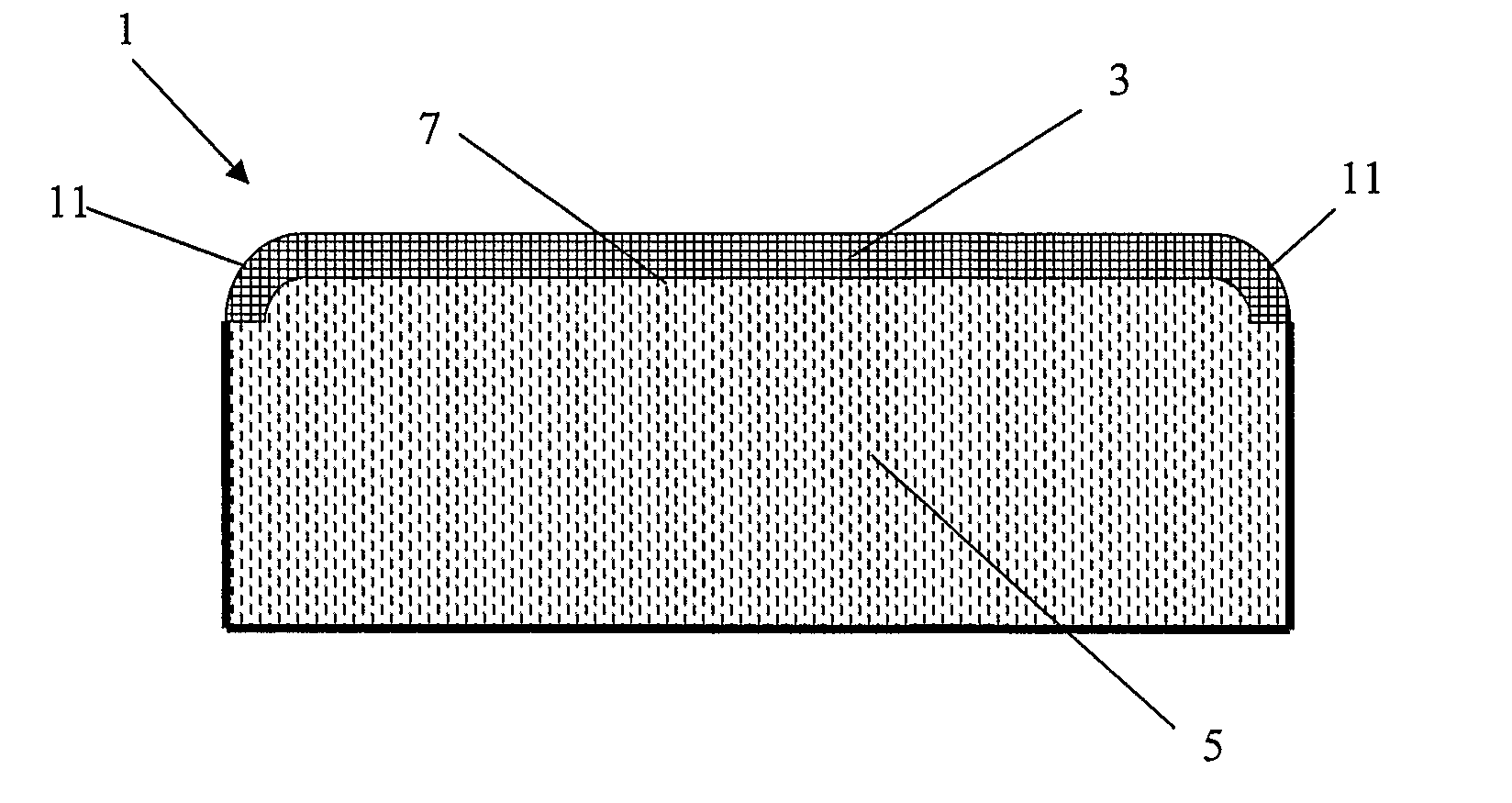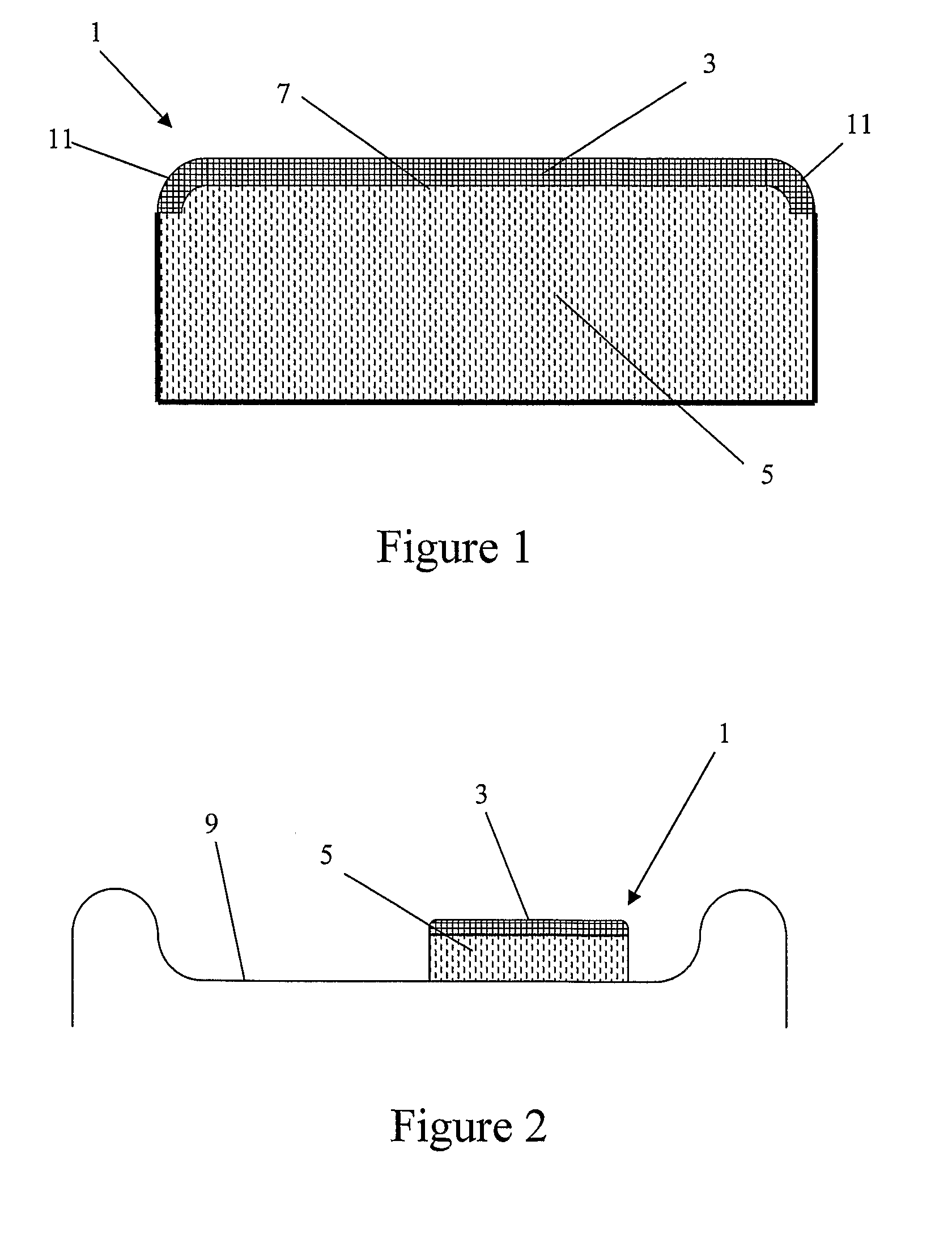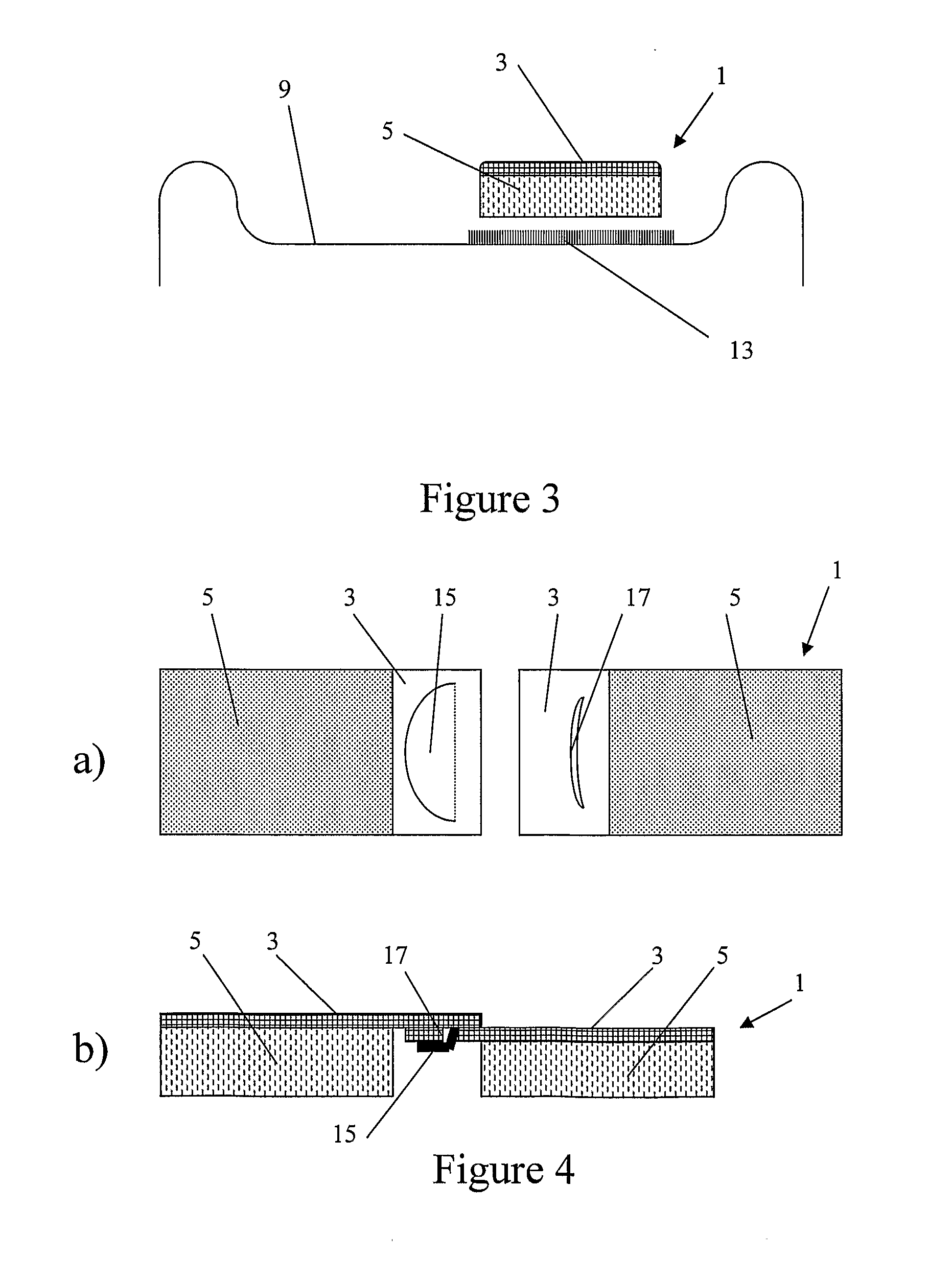In Tyre Sound Absorber
a technology of sound absorber and tyre, which is applied in the direction of non-skid devices, weaving, transportation and packaging, etc., can solve the problems of insufficient strength of noise absorber and damage of noise absorber, and achieve the effect of increasing air flow resistan
- Summary
- Abstract
- Description
- Claims
- Application Information
AI Technical Summary
Benefits of technology
Problems solved by technology
Method used
Image
Examples
example 1
[0042]A prototype tire sound absorber, according to one embodiment of this invention with a lower air flow resistance spacer layer and a higher air flow resistance thermoformable acoustic sheet, was made up and attached to alloy wheel rims using a pressure sensitive adhesive. Low profile tires were then fitted to the rim in the normal manner.
[0043]The alloy wheel rims were 18 inches diameter by 8 inches wide and the tires were Pontenza RE55S, 265 / 35ZR18.
[0044]The sound absorber measured 20mm thick, 90mm wide and molded with a radius on the leading edge.
[0045]The sound absorber had a thermoformable acoustic sheet with a measured spatial average flow resistance of 600 Rayls, and weighed 180 g / m2, with a thickness of approximately 0.5 mm.
[0046]The spacer layer had a density of 600 g / m2, and consisted of a blend of polyester fibers with an average fiber size of 6-denier. The spacer consisted of 30% polyester bicomponent fiber and 70% polyester staple fiber. The spatial average air flow ...
PUM
| Property | Measurement | Unit |
|---|---|---|
| air flow resistance | aaaaa | aaaaa |
| air flow resistance | aaaaa | aaaaa |
| air flow resistance | aaaaa | aaaaa |
Abstract
Description
Claims
Application Information
 Login to View More
Login to View More - R&D
- Intellectual Property
- Life Sciences
- Materials
- Tech Scout
- Unparalleled Data Quality
- Higher Quality Content
- 60% Fewer Hallucinations
Browse by: Latest US Patents, China's latest patents, Technical Efficacy Thesaurus, Application Domain, Technology Topic, Popular Technical Reports.
© 2025 PatSnap. All rights reserved.Legal|Privacy policy|Modern Slavery Act Transparency Statement|Sitemap|About US| Contact US: help@patsnap.com



